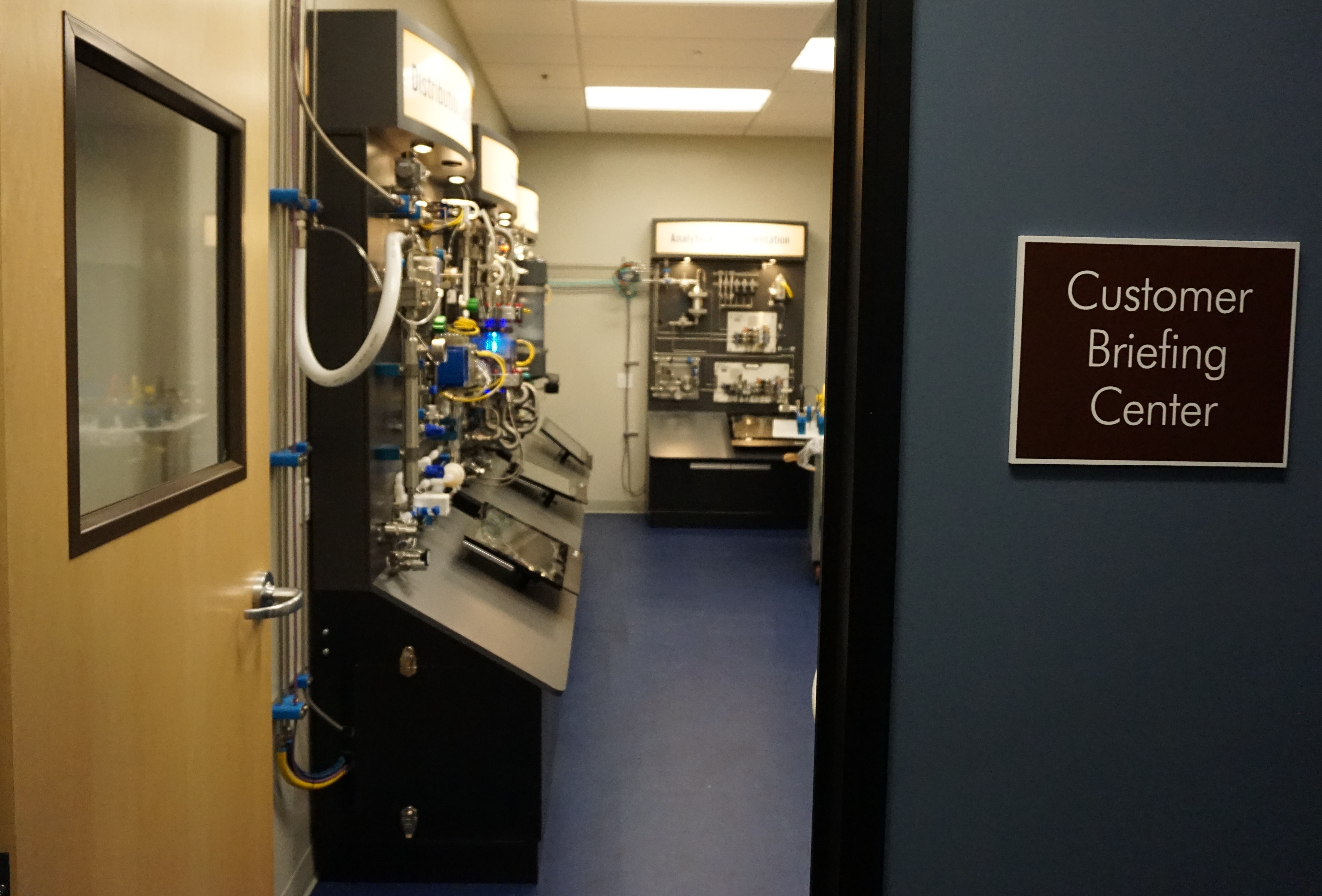Share this
Ball Valves Offer a Simple Design with Plenty of Configurations
by Jeff Hopkins on 5/22/19 8:45 AM
They offer the lowest pressure drop, and can handle flow in both directions. View cutaway illustrations and expert advice, and get our free resource collection.
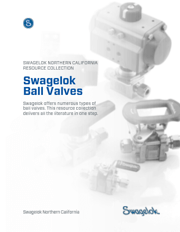 After viewing this article's tips and illustrations, get our new Swagelok Northern California Resource Collection on Ball Valves (pictured). It's a free download.
After viewing this article's tips and illustrations, get our new Swagelok Northern California Resource Collection on Ball Valves (pictured). It's a free download.
In one step you'll receive quick links to Swagelok's 60 Series Ball Valve interactive PDF, a ball valves overview, and the relevant Swagelok catalog.
When are ball valves advantageous?
When it comes to flow restriction, the ball valve reigns supreme in the valve world for lowest pressure drop. That's because the valve has a straight parallel bore which, if sized properly, matches the diameter of the lines connecting to it.
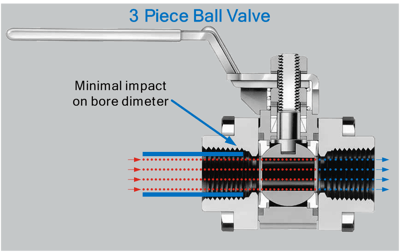
Ball valves are primarily used for fluid stream isolation and are meant to be used in the on or off position (versus globe or needle valves, which are made to be throttled).
Ball valves also can be used with flow traveling either direction, which sets them apart from check valves or pressure regulators.
With any fluid system device there is always more than meets the eye, let’s explore some considerations to make when selecting a ball valve.
Floating ball or trunnion ball?
Generally the ball in a ball valve "floats" inside the valve, and can be re-positioned by engaging a notch cut in the top of the valve ball. In the closed position, differential pressure adds force to the seat of the valve on the discharge, making for a tighter seal. This force also means that higher differential pressure results in a much higher operating torque, which can result in a valve that feels “locked” in the shut position.
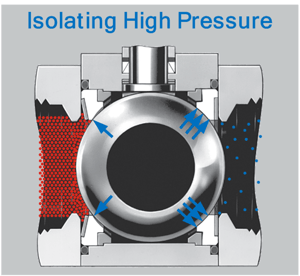
To overcome this problem at high pressures, Swagelok has employed a trunnion mechanism on the 83 and FKB series ball valve to support the ball. This presents the ball from being deflected by pressure for isolation up to 10,000 and 20,000 psig, respectively.
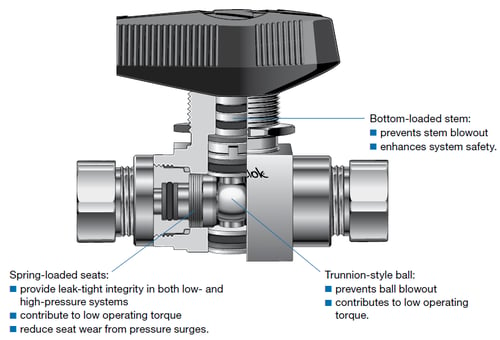
Venting ball valves
General isolation aside, it’s incredibly common to use ball valves as automatic safety isolation valves for hazardous gasses and fluids. From looking at the diagram, you may have guessed that a standard ball valve traps the process media inside the ball when the valve is closed. Depending on the application this can pose a hazard to operators, equipment, and facilities.
"When our lab technician opened the valve for incoming inspection, it made a loud popping sound and flames shot out both valve ports. Turns out the valve had been used on a pyrophoric line."
We had a case several years ago where a ball valve was returned to our factory for evaluation in the closed position. When our lab technician opened the valve for incoming inspection, it made a loud popping sound and flames shot out both valve ports. It turned out that the valve had been used on a pyrophoric line. Someone had shut the valve and removed it with pyrophoric media trapped in the ball.
On a safety isolation ball valve, trapped media can spell disaster in an incident such as a fire. A liquid media trapped in the ball can change phase, blowing out the valve seals. If the fluid is diesel fuel, for instance, blowing out the seals would add a new source of fuel for the already raging fire.
To prevent such a problem, ball valve venting options include external upstream and external downstream vents. These align the ball valve to vent the process fluid when the valve is in the closed position. This capability can be used in applications where it’s desirable to drain the process fluid only when the main isolation is in the closed position.
Our venting 60 series valves have a quarter-inch tube extension for the vent that can be swaged onto for installation of a bleed valve or other connection.
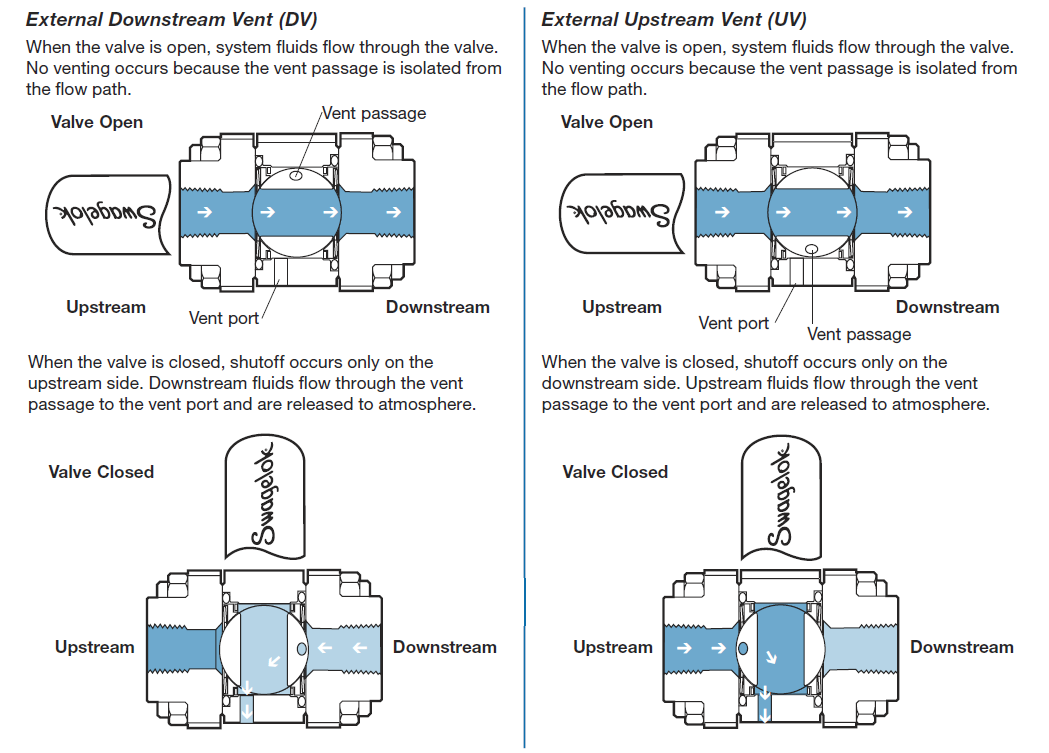
Handle options?
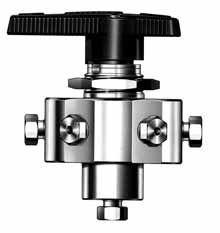
Every Swagelok ball valve can be actuated pneumatically or electrically for remote operation. Our electric actuators are particularly useful when it comes to multi-port stream selecting ball valves. Our pneumatic actuators are primarily limited to open or closed or mid-position throttling through differential operation (though we don’t recommend ball valves for this).
When it comes to a multi-port valve such as our 40 series seven-port stream, remote actuation can be critical for a process sampling system to an analyzer. That’s where an electric actuator can come in very handy.
Handle options? We have a few of those too. Whether it’s oval, extended, latch-lock, all metal, lockable, short swing, or multiple color, Swagelok has you covered. Oval handles and short swing handles let you reduce the amount of clearance needed around the valve. Latch-lock and lockable handles help prevent accidental valve operation. Lastly, changing valve handle color can help with valve identification in the field. For instance, you might use red handles for cooling water supply and blue handles for the return.
We encourage you to visit our will-call desk, where we have many of these options on display. You can play with them first-hand. We also have just about every ball valve in functional operation in our Customer Briefing Center (CBC). If you want to feel what it’s like to turn a trunnion ball valve at 10,000 PSIG we can show you!
The next time you find yourself designing a fluid system and want to know if the valve you want to select is the right fit, consider scheduling a CBC visit. When designing a system, it’s always a good idea to be able to physically interact with the components being used in the design. Seeing is believing and we are here to help you get a handle on things!
More like this:
Share this
- Archive (465)
- Assembly Services (207)
- About (100)
- Seal Support Systems (96)
- Best Practices (88)
- Training Services (74)
- Fittings (51)
- Semiconductor Applications (49)
- Hoses and Flexible Tubing (47)
- Regulators (44)
- Tubing (42)
- Grab Sampling Systems (32)
- Sampling Systems (32)
- Gas Systems (30)
- Services (30)
- Downloads (29)
- Valves (24)
- Application Support (18)
- Orbital Welding (17)
- Case Studies (13)
- Steam Systems (13)
- Frequently Asked Questions (12)
- Tools (12)
- Measurement Devices (7)
- Subsystems (6)
- Thermal Management (6)
- September 2023 (1)
- August 2023 (2)
- June 2023 (1)
- March 2023 (3)
- February 2023 (3)
- January 2023 (4)
- December 2022 (4)
- November 2022 (4)
- October 2022 (4)
- September 2022 (1)
- August 2022 (3)
- July 2022 (2)
- June 2022 (4)
- May 2022 (1)
- April 2022 (2)
- March 2022 (1)
- February 2022 (2)
- January 2022 (3)
- December 2021 (1)
- November 2021 (6)
- October 2021 (6)
- September 2021 (8)
- August 2021 (4)
- July 2021 (3)
- June 2021 (6)
- May 2021 (6)
- April 2021 (7)
- March 2021 (5)
- February 2021 (4)
- January 2021 (6)
- December 2020 (5)
- November 2020 (6)
- October 2020 (6)
- September 2020 (8)
- August 2020 (7)
- July 2020 (8)
- June 2020 (8)
- May 2020 (6)
- April 2020 (9)
- March 2020 (7)
- February 2020 (10)
- January 2020 (21)
- December 2019 (23)
- November 2019 (21)
- October 2019 (22)
- September 2019 (21)
- August 2019 (22)
- July 2019 (23)
- June 2019 (20)
- May 2019 (23)
- April 2019 (22)
- March 2019 (21)
- February 2019 (20)
- January 2019 (21)
- December 2018 (14)
- November 2018 (19)
- October 2018 (23)
- September 2018 (17)
- August 2018 (29)
- July 2018 (11)
- June 2018 (6)
- May 2018 (5)
- April 2018 (4)
- March 2018 (5)
- February 2018 (3)
- January 2018 (3)
- December 2017 (2)
- November 2017 (4)
- October 2017 (3)
- September 2017 (2)
- August 2017 (6)
- July 2017 (4)
- June 2017 (4)
- May 2017 (4)
- April 2017 (3)
- March 2017 (4)
- February 2017 (3)
- January 2017 (3)
- December 2016 (3)
- November 2016 (3)
- October 2016 (3)
- September 2016 (5)
- August 2016 (5)
- July 2016 (4)
- June 2016 (5)
- May 2016 (3)
- April 2016 (4)
- March 2016 (5)
- February 2016 (11)
- January 2016 (1)
- December 2015 (3)
- November 2015 (4)
- October 2015 (3)
- September 2015 (4)
- August 2015 (4)
- July 2015 (8)
- June 2015 (5)
- May 2015 (3)
- April 2015 (4)
- March 2015 (4)
- February 2015 (3)
- January 2015 (4)
- December 2014 (2)
- November 2014 (3)
- October 2014 (4)
- September 2014 (4)
- August 2014 (4)
- July 2014 (5)
- June 2014 (4)
- May 2014 (4)
- April 2014 (5)
- March 2014 (4)
- February 2014 (3)
- January 2014 (4)
- December 2013 (5)
- November 2013 (3)
- October 2013 (4)
- September 2013 (3)
- August 2013 (5)
- July 2013 (5)
- June 2013 (5)
- May 2013 (3)
- April 2013 (6)
- March 2013 (4)
- February 2013 (4)
- January 2013 (8)
- December 2012 (4)
- November 2012 (6)
- October 2012 (6)
- September 2012 (4)
- August 2012 (4)
- July 2012 (4)
- June 2012 (4)

.webp?width=210&height=70&name=StickyLogo%20(5).webp)

